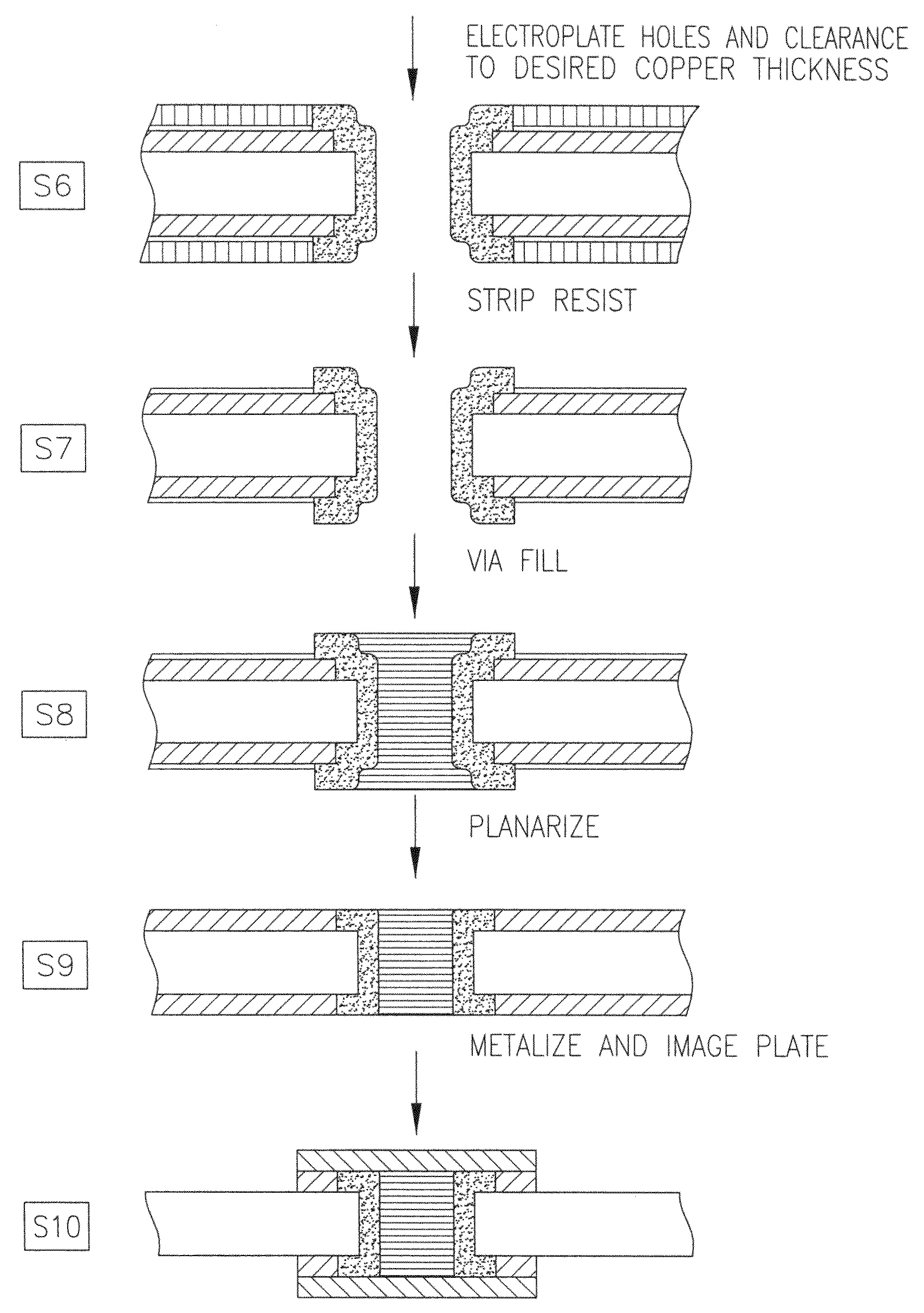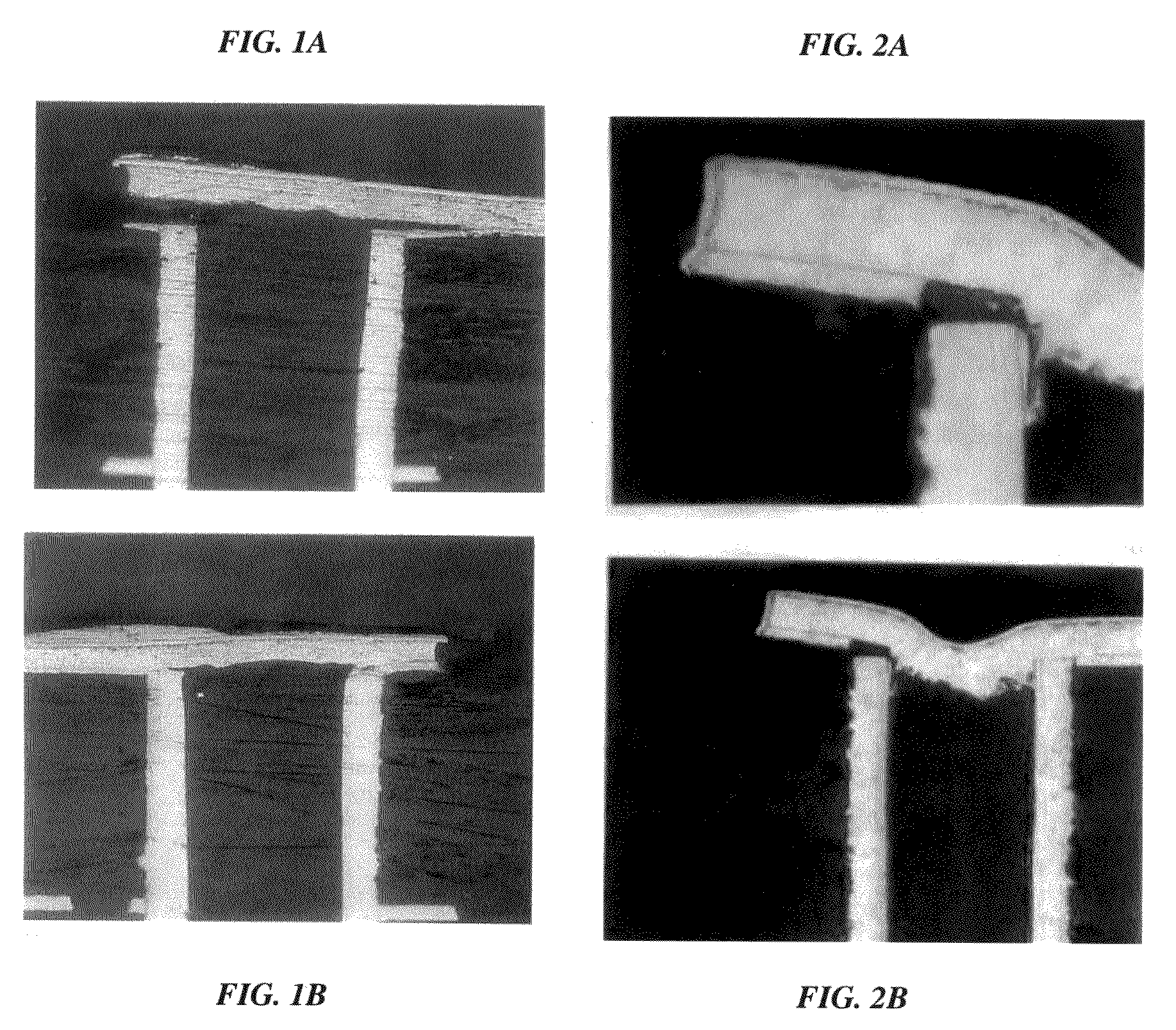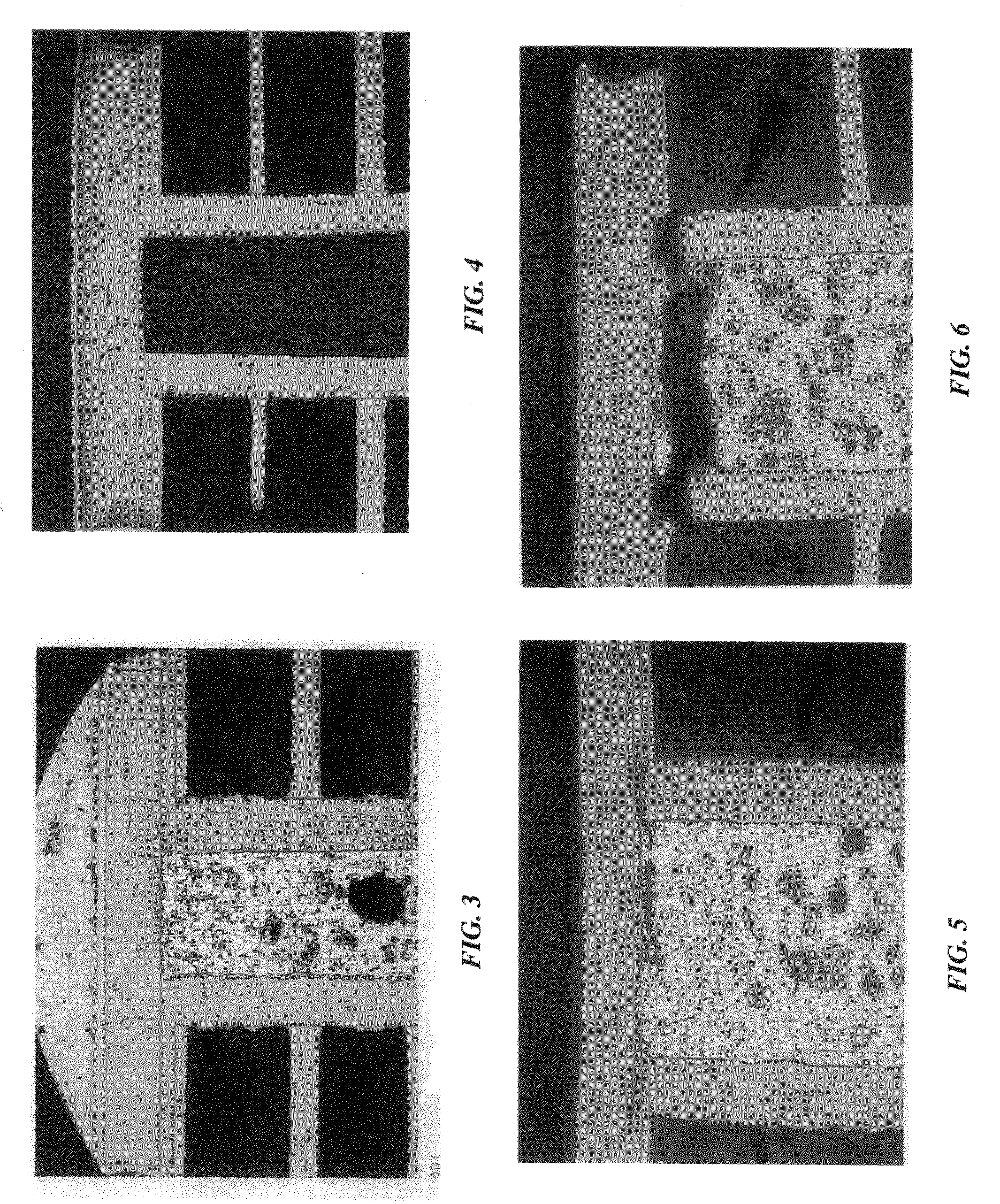Multilayer printed wiring boards with holes requiring copper wrap plate
a multi-layer printing and copper wrap plate technology, applied in the direction of resistive material coating, lithographic masks, etching metal masks, etc., can solve the problems of circuit board failure, the thickness of wraparound plating does not completely eliminate the occurrence of circuit board failures, and the heat dissipation of more hea
- Summary
- Abstract
- Description
- Claims
- Application Information
AI Technical Summary
Benefits of technology
Problems solved by technology
Method used
Image
Examples
Embodiment Construction
[0056]In the following detailed description, only certain exemplary embodiments of the present invention have been shown and described, simply by way of illustration. As those skilled in the art would realize, the described embodiments may be modified in various different ways, all without departing from the spirit or scope of the present invention. Accordingly, the drawings and description are to be regarded as illustrative in nature and not restrictive.
[0057]In the context of the present invention, holes refer to through-, blind-, buried-, and / or micro-vias and / or holes. In addition, metalization, metalize, and / or metalizing refer to electroless copper (or electroless coppering) or alternate Metalizing process using, e.g., Shadow process (Electrochemicals, Inc.), Eclipse Process (McDermid, Inc.), Dylex process (Okuno Chemical), etc.
[0058]Here, holes are drilled and plated with copper to the minimum required hole wall thickness in the printed circuit boards to connect copper patter...
PUM
| Property | Measurement | Unit |
|---|---|---|
| Thickness | aaaaa | aaaaa |
| Size | aaaaa | aaaaa |
| Electrical conductor | aaaaa | aaaaa |
Abstract
Description
Claims
Application Information
 Login to View More
Login to View More - R&D
- Intellectual Property
- Life Sciences
- Materials
- Tech Scout
- Unparalleled Data Quality
- Higher Quality Content
- 60% Fewer Hallucinations
Browse by: Latest US Patents, China's latest patents, Technical Efficacy Thesaurus, Application Domain, Technology Topic, Popular Technical Reports.
© 2025 PatSnap. All rights reserved.Legal|Privacy policy|Modern Slavery Act Transparency Statement|Sitemap|About US| Contact US: help@patsnap.com



